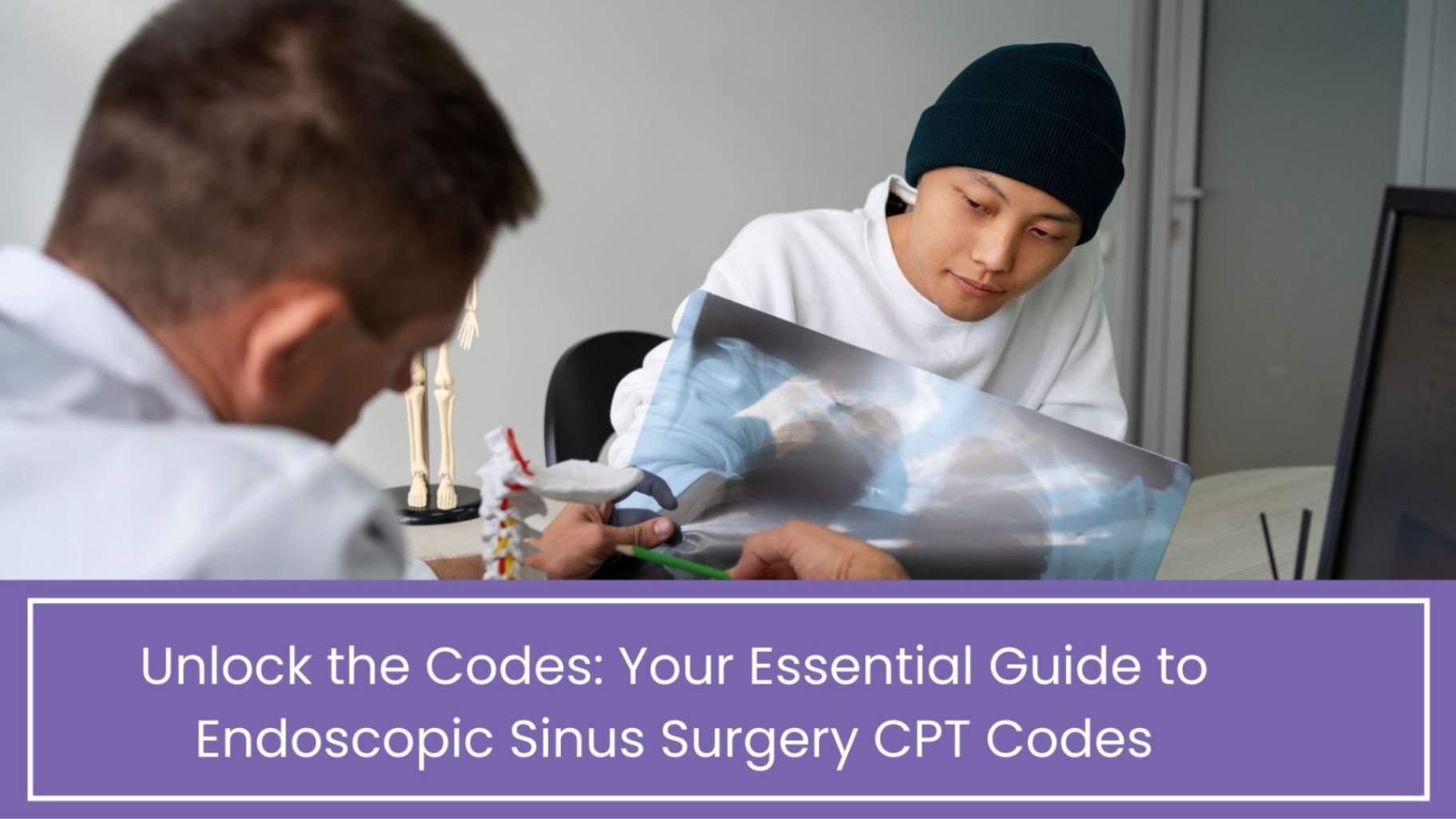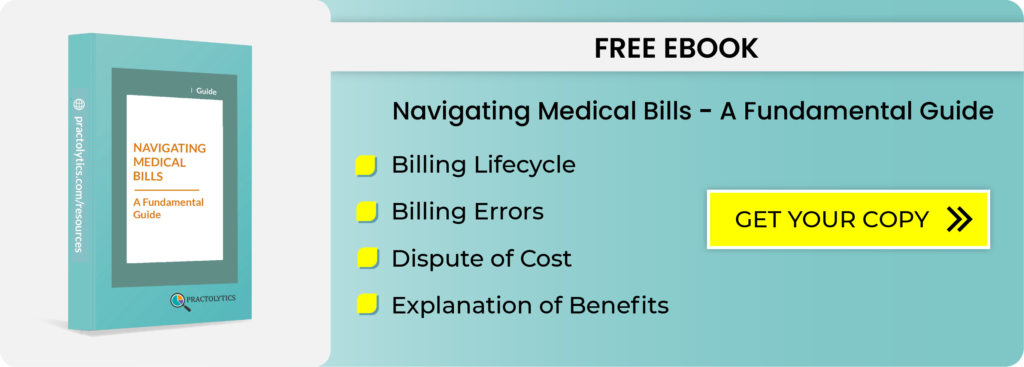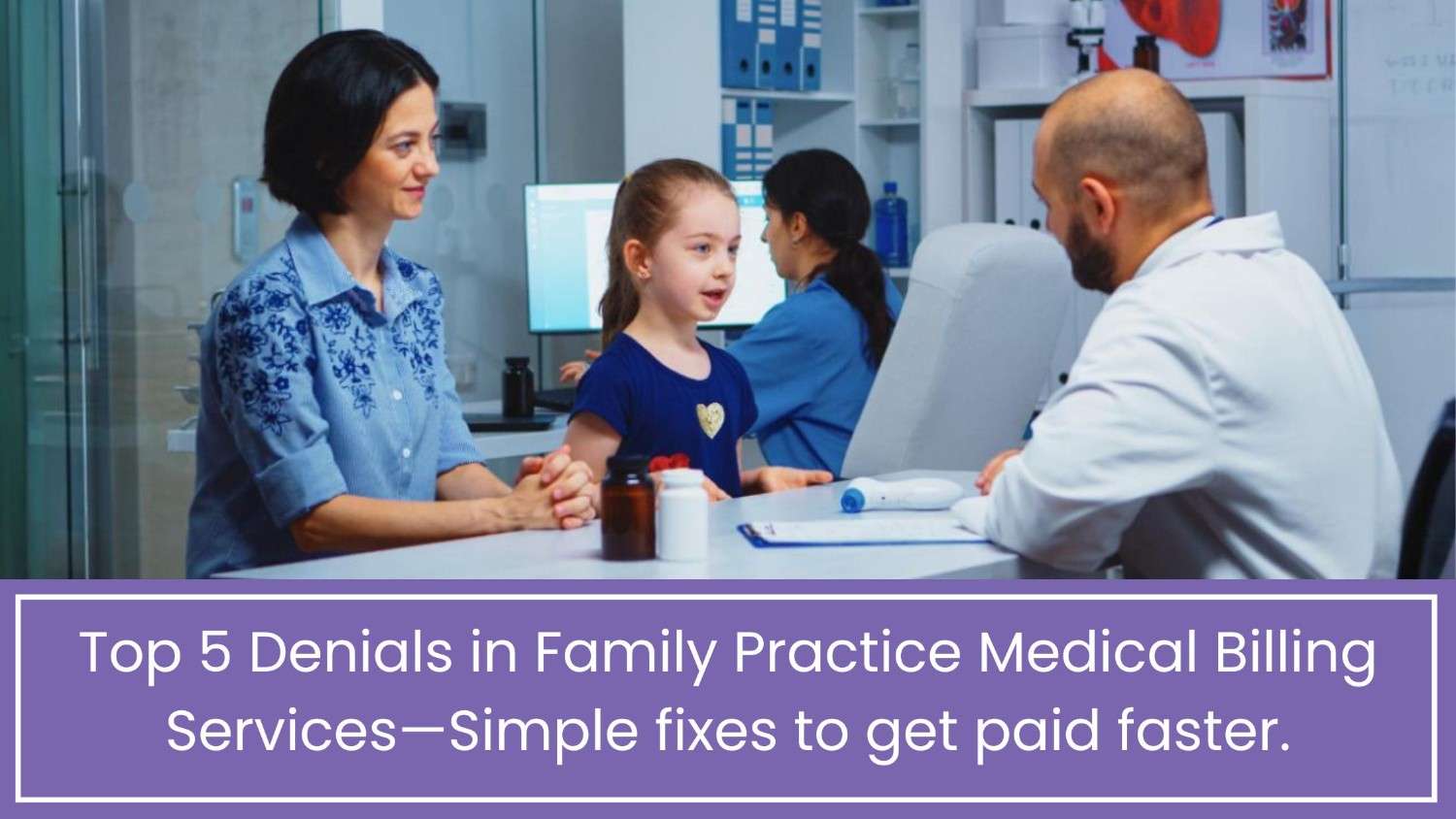Understanding Endoscopic Sinus Surgery CPT Codes
Understanding Endoscopic Sinus Surgery (ESS) CPT Codes is one of the most important procedures in an ENT practice. It is a surgical procedure used to treat sinus conditions. Chronic sinusitis is a challenging condition. It can significantly impact a patient’s life. The billing department faces a challenge, but the process is only part of the battle. The full fight involves more than just the billing process. Accurately transcribing surgery notes is one part of the process. The other part is translating those notes into Current Procedural Terminology (CPT) codes, a language insurance companies understand.
ESS coding is a challenging aspect of the medical billing industry. It can feel like navigating a maze. A rejected claim can result in financial losses for your practice. It can also waste valuable time. Inaccurate codes can be caused by overlooked modifiers or a lack of supporting documentation. These issues can also be the cause of this. This has an immediate effect on your firm’s financial stability. It goes beyond simple administrative annoyance.
This procedure is demythologizable. The good news is that it is. ESS codes can be understood without memorizing long sets of digits. It is not necessary to commit lengthy sets of digits to comprehend ESS codes. It involves understanding the reasoning behind the procedures. Creating a system that guarantees accuracy from planning to filing the claim is the goal. Let’s learn the procedures for becoming proficient with Endoscopic Sinus Surgery CPT codes. Then, we can delve into the specifics of these codes.
Table of Contents
Anatomy of the 3125 Code Series:
At the heart of endoscopic sinus surgery coding are the CPT codes in the 3125X series. These codes describe the primary work of the surgery and are based on which sinus cavities are addressed. Think of them as the building blocks of your claim.
Here are the key players:
31255 – The most typical ESS code is ethmoidectomy. This procedure involves the surgical removal of ethmoid sinus tissue. This can lead to ongoing sinus problems. It’s the starting point for many claims.
31254 – Maxillary Antrostomy: Used when a physician creates an opening into the maxillary sinus. Depending on the severity of the patient’s condition, this code is frequently billed in addition to an ethmoidectomy.
31256—The code for sphenoidotomy is used to make an incision into the sphenoid sinus. This procedure involves creating an opening in the sphenoid sinus. Usually, this procedure is saved for patients that are more complex. Because of their deeper location in the skull, the sphenoid sinuses are more difficult to reach.
31267 – Maxillary antrostomy is a surgical procedure. This procedure involves removing tissue or polyps from the maxillary sinus and creating an incision.
31276 – Frontal Sinus Exploration is an endoscopic examination of the frontal sinus. This procedure is often used to diagnose and treat conditions within the frontal sinus.
31288 – A surgeon makes an incision into the sphenoid sinus. This procedure is called a sphenoidotomy with biopsy.
These codes don’t apply to everyone. No single method is effective for everyone. Which sinuses were treated and what treatments were done on each should be clearly stated in your doctor’s records. This information must be detailed for clarity. The codes are a direct reflection of the surgeon’s work.
Role of Bundled Codes and Modifiers
Endoscopic sinus surgery is rarely performed alone. It is typically performed in conjunction with other procedures. Septoplasty, turbinate reduction, and polypectomy are common surgical procedures. Coding becomes complex when multiple procedures are performed in the same session.
The biggest mistake a practice can make is unbundling, which is billing for a procedure that is already considered part of the primary ESS code. Minor tissue removal is sometimes an incidental part of a primary procedure. This type of removal is not a separate procedure. You must comprehend the idea of a modifier. This will help you prevent the issue.
A two-digit number is called a modifier. It adds further details about the service rendered to a CPT code. Here are the most critical ones for ESS:
- The CPT code should use modifier -50 for bilateral procedures. Modifier -50 indicates a procedure performed on both sides.
- One of the most crucial modifiers is -59 (Distinct Procedural Service). It is often overused. It shows that one operation was carried out independently. This operation was carried out concurrently with another. A surgeon performs an ESS for chronic sinusitis plus a septoplasty for a deviated septum. You would use this modifier. A distinct claim is made. The septoplasty is performed for a different reason than the sinusitis. This requires impeccable documentation to support.
- Modifier -59 has been largely replaced by new X-modifiers. These new modifiers include XS, XE, XP, and XU. The reason for the separate process determines which one you utilize. This process may be a different surgical encounter. It’s important to find out which modifier the payer prefers. Consult their regulations for this information.
Clearly explaining the reasons for distinct and independent procedures is crucial for using modifiers effectively. This ensures that modifiers are used correctly. A payer will likely reject a claim without an explanation. They will claim the services were bundled.
Thorough Clinical Documentation
In the world of medical billing services, if it wasn’t documented, it wasn’t done. No amount of coding expertise can overcome poor surgical notes. The surgeon’s operative report is the single most important piece of evidence supporting your claim.
The documentation must be a clear, step-by-step narrative that justifies every code you submit. For an ESS procedure, this means:
- Listing all the sinuses that were explored and treated. You should not only state “endoscopic sinus surgery.” A bilateral endoscopic ethmoidectomy was performed. A left maxillary antrostomy was also performed.
- The surgery was successful. It was performed due to medical reasons. Why was the ethmoidectomy performed? The notes should mention chronic ethmoiditis or other specific conditions.
- Providing a detailed description of any additional procedures. The notes should explain the deviated septum. They should also explain the procedures done to repair the septum if a septoplasty was performed. A turbinate reduction must be explained as a distinct operation with a convincing medical rationale. It should be explained why this procedure is necessary.
Your claim will be stronger. Your chances of being approved are increased by clear paperwork.
Common Challenges and How to Avoid Them
Even seasoned billing teams can fall into traps. Here are some of the most common mistakes in ESS coding:
- Forgetting to Check Prior Authorization: Orthopedic surgeries are almost always subject to prior authorization. A denial for “no pre-authorization” is a hard one to appeal.
- The assumption that each procedure in an ESS is chargeable is called incorrect bundling. Incorrect bundling occurs when procedures are charged for separately. Always refer to the most recent payer policies. Refer to the most recent CPT recommendations.
- Omitting a necessary modifier can result in denial. You risk being denied if you omit a necessary modifier.
- Incomplete documentation can lead to claim denials. A thorough operational report is crucial for submitting a claim.
Conclusion:
It may seem impossible, but knowing the CPT codes for endoscopic sinus surgery can increase your practice’s productivity and income. You can overcome the aggravation of constant denials by simplifying the process. Focus on mastering fundamental codes and modifiers and ensuring flawless clinical documentation. The secret is to view coding as the final step in a successful patient interaction. It should not be seen as a tedious chore. You can ensure your practice is compensated for its excellent care. Knowing the language of reimbursement is key.
ALSO READ – Decoding CPT: Your Guide to Codes and Regulations 2024
Talk to Medical Billing Expert Today — Get a Free Demo Now!






